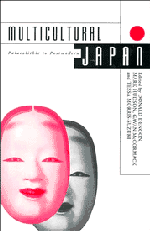Book contents
- Frontmatter
- Contents
- List of Figures and Tables
- List of Contributors
- Abbreviations
- Introduction
- Part 1 Archaeology and Identity
- 1 The Japanese as an Asia-Pacific Population
- 2 North Kyushu Creole: a language-contact model for the origins of Japanese
- 3 Beyond Ethnicity and Emergence in Japanese Archaeology
- 4 Archaeology and Japanese Identity
- Part 2 Centre and Periphery
- Part 3 Contact with the Outside
- Part 4 The Japanese Family
- Part 5 Culture and Ideology
- Afterword: Diversity and Identity in the Twenty-First Century
- Index
1 - The Japanese as an Asia-Pacific Population
Published online by Cambridge University Press: 05 November 2011
- Frontmatter
- Contents
- List of Figures and Tables
- List of Contributors
- Abbreviations
- Introduction
- Part 1 Archaeology and Identity
- 1 The Japanese as an Asia-Pacific Population
- 2 North Kyushu Creole: a language-contact model for the origins of Japanese
- 3 Beyond Ethnicity and Emergence in Japanese Archaeology
- 4 Archaeology and Japanese Identity
- Part 2 Centre and Periphery
- Part 3 Contact with the Outside
- Part 4 The Japanese Family
- Part 5 Culture and Ideology
- Afterword: Diversity and Identity in the Twenty-First Century
- Index
Summary
Several models have been proposed to explain the origins of the modern Japanese people. The most plausible are the gradual transformation and the Yayoi immigration theories. According to the first, prehistoric Jōmon people became the protohistoric Kofun people without any substantial admixture, and finally evolved into the modern Japanese of the greater part of the Japanese islands. In the second model, immigrant populations from the Asian continent arrived from the Korean peninsula during the Yayoi, and possibly also in the early Kofun period, and played an important role in the formation of the modern Japanese, especially in the main islands of Honshu, Kyushu and Shikoku. In recent years, the immigration model has become widely accepted among anthropologists and archaeologists. I have also come to support this model. This chapter reviews the population history of the archipelago from the viewpoint of physical anthropology, and discusses the biological relations of Japanese populations to circum-Pacific Mongoloid groups.
The First Inhabitants
Recent newspaper articles report that cultural deposits which yielded several Palaeolithic stone tools at the Takamori site in Miyagi prefecture were dated to about 500 000 years bp on palaeomagnetic, thermoluminesence and ESR evidence, corresponding in age to the early Homo erectus stage at Zhoukoudian in China Although controversy continues over such early dates, it would not be surprising if such deposits were found in Japan because raised land-bridges formed several times following sea-level changes during the mid to late Pleistocene (figure 1.1).
- Type
- Chapter
- Information
- Multicultural JapanPalaeolithic to Postmodern, pp. 19 - 30Publisher: Cambridge University PressPrint publication year: 1996
- 1
- Cited by



